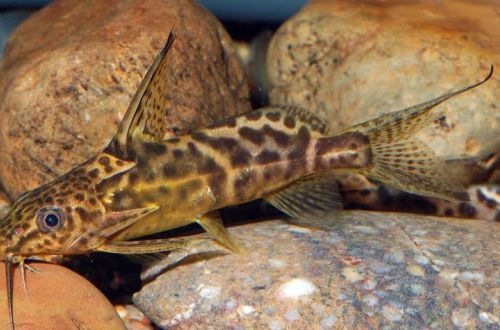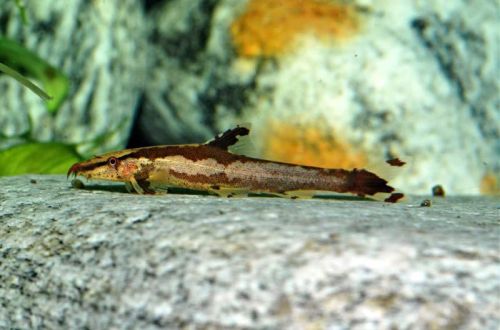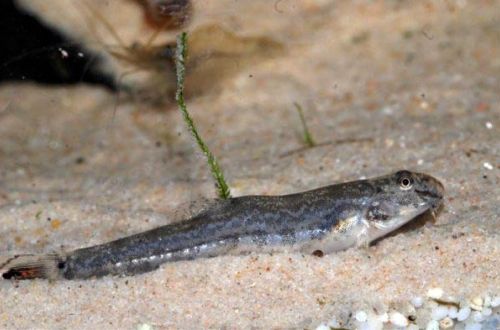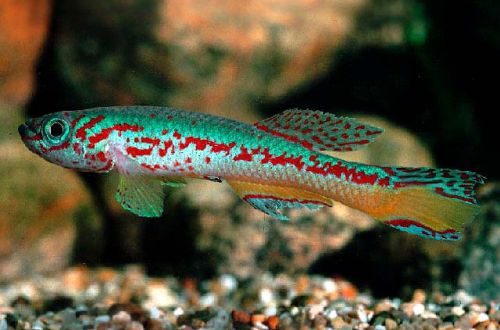
Synodontis Congo
Greshoff’s Synodontis or Kongo’s Synodontis, scientific name Synodontis greshoffi, belongs to the Mochokidae family. Catfish has such a set of qualities as unpretentiousness, endurance and peaceful disposition, in addition, he has an original body pattern. All this makes it an excellent candidate for a community aquarium.

Contents
Habitat
It occurs in various biotopes of the Congo Basin. The range is limited to the territory of the modern Democratic Republic of the Congo, although this is a large part of the length of the river, so we can assume that the catfish is quite widespread in the wild. Like other members of the genus, it lives near the bottom, preferring to stick to areas with a slow current with a large number of shelters.
Brief information:
- The volume of the aquarium – from 110 liters.
- Temperature – 23-27°C
- Value pH — 6.5–7.2
- Water hardness – soft to medium hard (3-15 dGH)
- Substrate type – sandy, soft
- Lighting – subdued or moderate
- Brackish water – no
- Water movement – light or moderate
- The size of the fish is up to 20 cm.
- Nutrition – any drowning
- Temperament – peaceful
- Keeping alone or in a group in the presence of shelters
Description
Adults reach a length of up to 20 cm, although in the natural environment they can grow much more. The body color is yellow-brown, cream-colored with an intricate pattern. The tail and fins have brown speckles on a translucent background, the first rays are significantly enlarged and are spikes for protection from potential predators. Sexual dimorphism is weakly expressed, it is quite problematic to distinguish a male from a female even for an experienced aquarist.
Food
The diet of Synodontis Kongo includes almost all types of popular foods (dry, frozen and live) in combination with herbal supplements in the form of peeled peas, cucumber. The food must be sinking.
Maintenance and care, arrangement of the aquarium
For one fish, a tank with a volume of 110 liters is enough. In the design, it is recommended to use a soft sandy substrate in which the catfish can freely dig without injuring itself. It is also necessary to provide shelters in the form of snags from the roots and branches of trees, or from other decorative items. Lighting is subdued, floating plants can act as a means of natural shading. In bright light, Synodontis is likely to spend most of its time in hiding. The rest of the design does not matter and is selected taking into account the needs of other fish.
In the process of maintaining the aquarium, pay special attention to the cleanliness of the soil, prevent silting and accumulation of organic waste, this not only worsens the quality of the water, but also increases the risk of infections. In addition to cleaning the substrate, a part of the water (15–20% of the volume) should be renewed weekly with fresh water to maintain biological balance.
Behavior and Compatibility
Greshoff’s Synodontis is considered a peaceful and accommodating species, but given its size and promiscuous diet, it can easily accidentally swallow a small fish. It is also worth avoiding the introduction of overly active or aggressive species that can harm the catfish and themselves suffer from its protective spikes.
Other representatives of the genus are not very friendly to their relatives and often come out in skirmishes for territory if they are in a small aquarium. However, this species is more tolerant and can be kept without problems not only singly, but also in a group. The main thing is that each catfish has its own shelter.
Breeding / breeding
In nature, Sinodontis Kongo produces offspring during the rainy season, scatters the eggs near the bottom, and does not show parental care. It is extremely difficult to initiate spawning in an aquarium. At the time of this publication, it was not possible to find reliable information about the breeding of this species at home. The fry are obtained from specialized commercial fish farms.
Fish diseases
The main cause of most diseases is unsuitable living conditions and poor-quality food. If the first symptoms are detected, you should check the water parameters and the presence of high concentrations of hazardous substances (ammonia, nitrites, nitrates, etc.), if necessary, bring the indicators back to normal and only then proceed with treatment. Read more about symptoms and treatments in the Aquarium Fish Diseases section.





